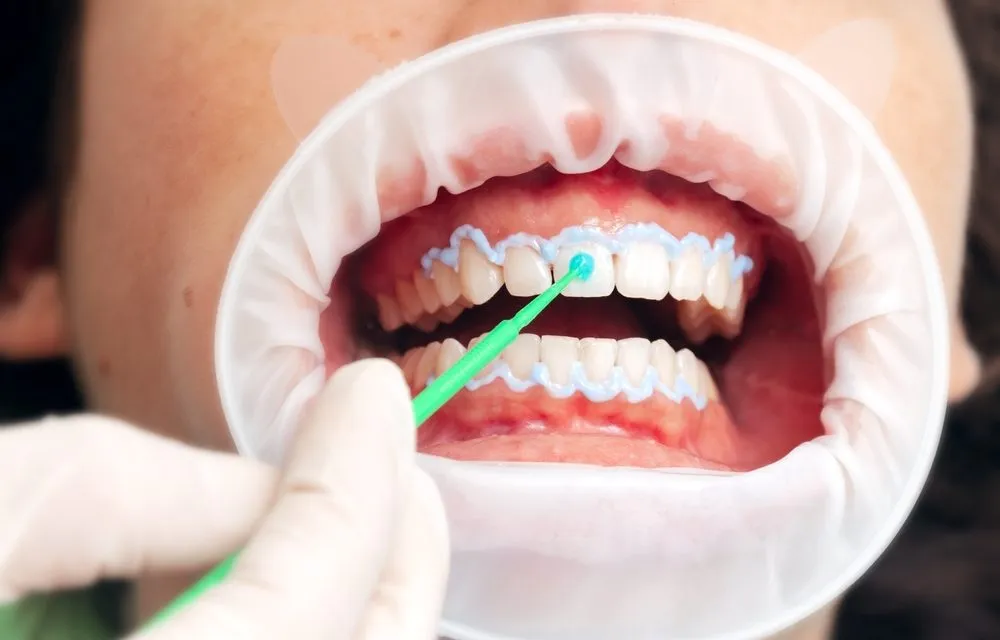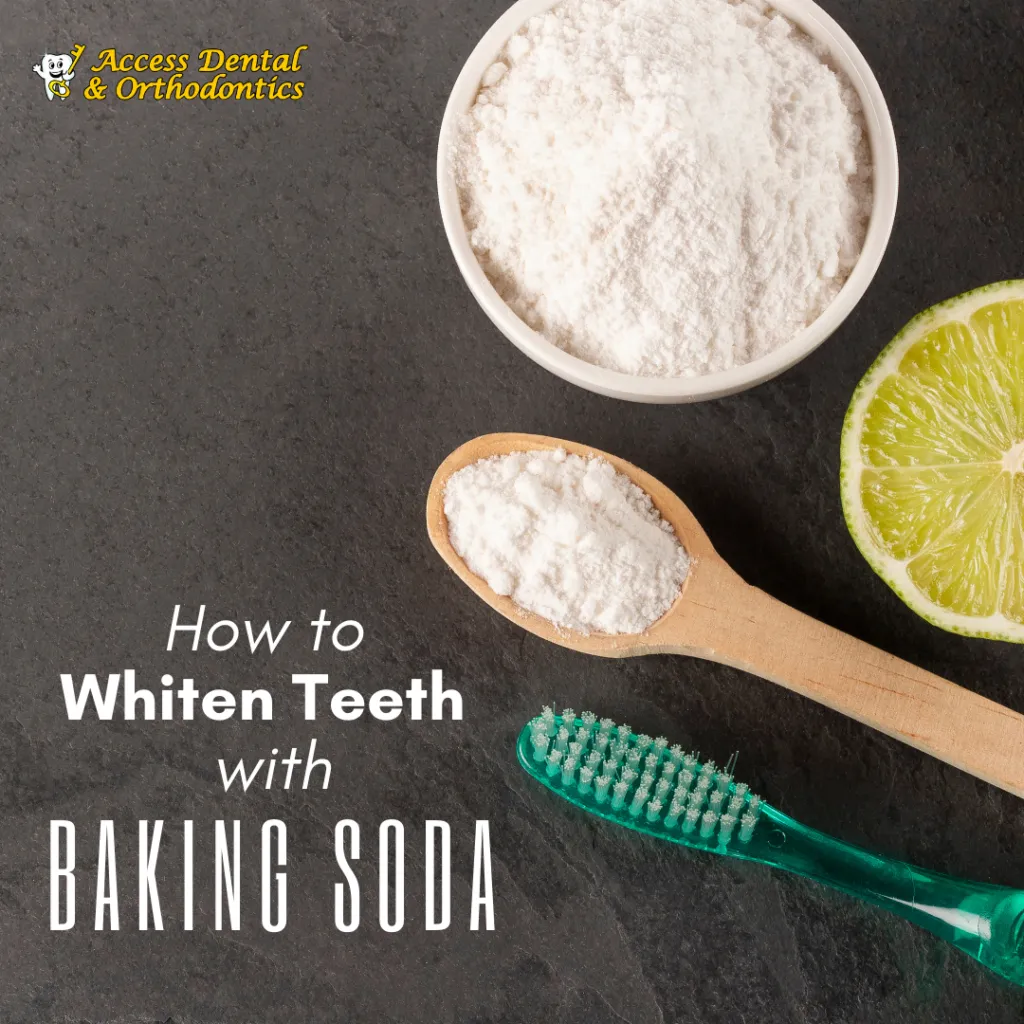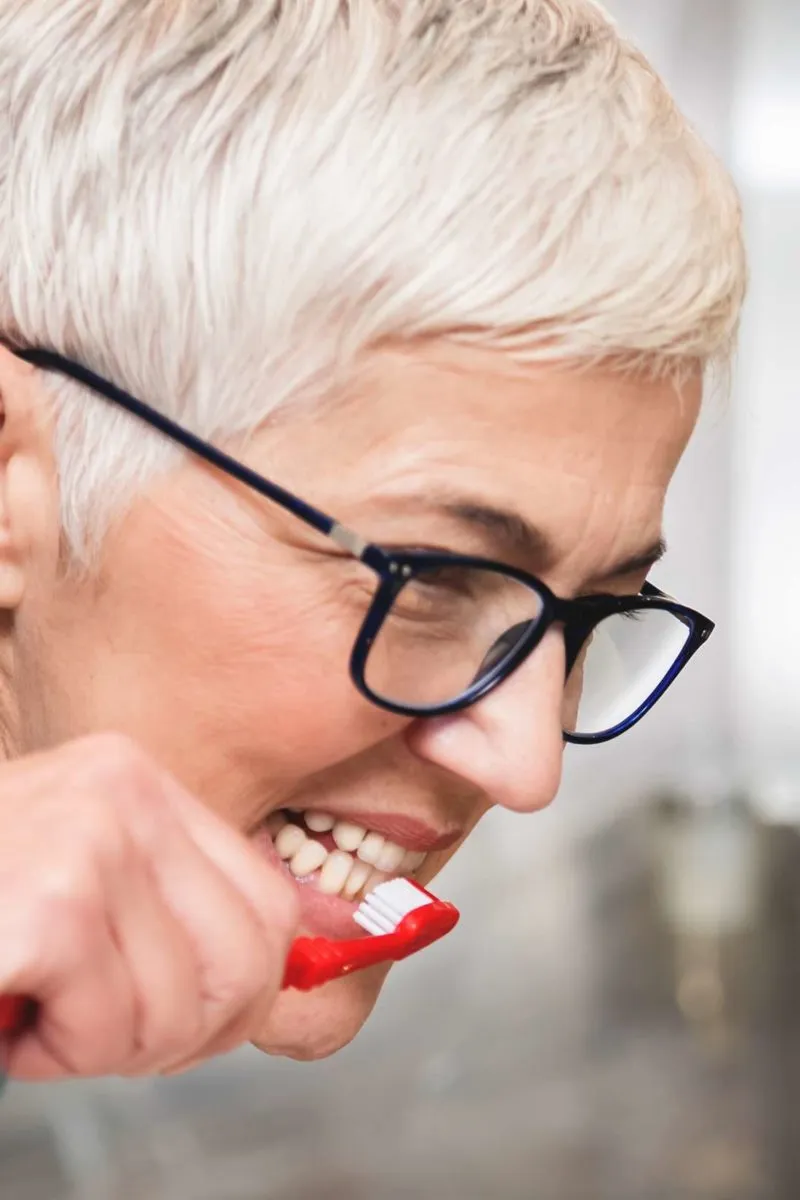What is Hydrogen Peroxide & Baking Soda for Teeth Whitening
The quest for a brighter, whiter smile has led many to explore various teeth whitening methods, including the use of hydrogen peroxide and baking soda. This DIY approach has gained popularity due to its accessibility and perceived effectiveness. Hydrogen peroxide, a mild antiseptic, is a common ingredient in many dental products. Baking soda, also known as sodium bicarbonate, is a mild abrasive that can help remove surface stains. Used together, they offer a potentially affordable and convenient teeth whitening solution. However, it is crucial to understand the scientific principles behind this method, its potential benefits, and the necessary precautions to ensure safe and effective usage. Before embarking on this teeth whitening journey, it’s important to be well-informed.
How Does This Teeth Whitening Method Work
The teeth whitening process with hydrogen peroxide and baking soda hinges on their respective properties. Hydrogen peroxide acts as an oxidizing agent, penetrating the enamel to break down stain molecules. This process helps to lighten the discoloration within the tooth structure. Baking soda complements this action by acting as a gentle abrasive. It helps to scrub away surface stains that contribute to a dull appearance. Combining these two ingredients creates a multifaceted approach to teeth whitening. The effectiveness of this method, however, depends on several factors, including the type of stains, the concentration of hydrogen peroxide used, and the frequency of application. Understanding the science behind this method is essential for setting realistic expectations and using it safely. This knowledge enables individuals to make informed decisions regarding their dental health and hygiene.
The Science Behind Hydrogen Peroxide

Hydrogen peroxide’s effectiveness in teeth whitening is rooted in its chemical properties. As an oxidizing agent, it releases oxygen molecules that interact with the stain molecules present within the enamel and dentin of the teeth. This interaction breaks down the complex stain compounds into smaller, less visible components, leading to a lightening effect. The concentration of hydrogen peroxide significantly impacts its effectiveness. Higher concentrations can yield quicker results but also increase the risk of side effects. The peroxide penetrates the tooth structure, targeting the discoloration from both intrinsic and extrinsic sources. This process requires time and repeated applications to achieve noticeable whitening. It’s important to note that the effectiveness varies depending on the type and severity of the staining, emphasizing the need for patience and consistency.
The Power of Baking Soda
Baking soda, also known as sodium bicarbonate, contributes to teeth whitening through its mild abrasive action. It helps remove surface stains caused by food, drinks, and tobacco, which contribute to a dull or yellow appearance. The abrasive particles gently scrub away these stains, revealing a brighter surface. This mechanical action complements the chemical action of hydrogen peroxide, providing a comprehensive cleaning and whitening effect. Baking soda also has a mild alkaline nature, which can help neutralize acids in the mouth, creating an environment less conducive to stain formation. While effective for removing surface stains, baking soda does not significantly alter the intrinsic color of the teeth. Therefore, it works best on extrinsic stains, improving the overall appearance of the teeth. Excessive use, however, can wear down the enamel, hence the importance of moderation and proper technique.
How to Prepare for Teeth Whitening
Preparing for teeth whitening with hydrogen peroxide and baking soda involves understanding the process, assessing individual dental health, and gathering the necessary materials. Before beginning, it’s essential to consult a dentist, especially if you have pre-existing dental issues, such as cavities, gum disease, or sensitive teeth. This consultation helps determine if this method is appropriate for your specific needs and helps identify any potential risks. Next, select a low-concentration hydrogen peroxide solution (typically 3%). Higher concentrations should be avoided unless under professional guidance. In addition to these ingredients, gather a small bowl, a soft-bristled toothbrush, and a timer. It is important to approach the process with care, precision, and awareness to achieve desired results and minimize side effects. Preparing adequately ensures a safer and more effective teeth whitening experience.
Things to Consider Beforehand

Before starting the teeth whitening process, several factors must be considered to ensure safety and efficacy. Evaluate your oral health; any untreated dental issues should be addressed by a dentist before attempting to whiten your teeth. Individuals with sensitive teeth should exercise caution and start with a lower concentration of hydrogen peroxide. Understand that this method may not be suitable for everyone, and results vary depending on the type and severity of stains. Consider any dental work you have had done, such as fillings, crowns, or veneers, as this method will only whiten natural teeth. Set realistic expectations; over-the-counter methods typically provide gradual whitening. Also, review any potential allergies or sensitivities to the ingredients used. Being well-informed and prepared prevents potential complications and enhances the overall effectiveness of teeth whitening.
Potential Risks and Side Effects
Teeth whitening with hydrogen peroxide and baking soda can come with potential risks and side effects that need careful consideration. Common side effects include tooth sensitivity and gum irritation, especially if high concentrations of hydrogen peroxide are used. Prolonged or excessive use can erode the enamel, increasing the risk of cavities and other dental problems. There is also the risk of soft tissue irritation if the solution comes into contact with the gums or other oral tissues. Individuals with dental restorations, such as fillings or crowns, should be aware that this method does not whiten these materials. In some cases, the whitening can cause uneven results, highlighting any underlying dental issues. To mitigate these risks, use the proper concentration of hydrogen peroxide, follow the recommended application frequency and duration, and consult a dentist before starting the process. If any adverse effects occur, discontinue use and seek professional dental advice.
Step-by-Step Guide to Teeth Whitening
This step-by-step guide provides a clear and concise method for teeth whitening using hydrogen peroxide and baking soda. First, gather your materials: a low-concentration hydrogen peroxide solution (3%), baking soda, a small bowl, a toothbrush, and a timer. Second, mix the ingredients in the bowl. Usually, the ratio is one part hydrogen peroxide to two parts baking soda, forming a paste. Next, apply the mixture to your toothbrush. Brush your teeth gently with the paste for about two minutes, making sure to reach all surfaces. Rinse your mouth thoroughly with water, ensuring you remove all traces of the mixture. After brushing, you may notice your teeth are more sensitive than usual. The frequency of application should be limited, typically once or twice a week, to avoid overuse. Following these steps ensures you achieve desired results safely.
Mixing Hydrogen Peroxide and Baking Soda

Mixing hydrogen peroxide and baking soda requires precision to achieve the right consistency and effectiveness. The ideal ratio is about one part hydrogen peroxide to two parts baking soda. This ratio helps create a paste that is both effective and gentle. Start by pouring a small amount of hydrogen peroxide into a clean bowl. Then, gradually add baking soda while mixing, until a paste forms. Adjust the amount of baking soda as needed to achieve the desired consistency. The paste should be thick enough to stay on your toothbrush but not too abrasive. Avoid using too much hydrogen peroxide, as it can increase the risk of tooth sensitivity and gum irritation. Preparing the mixture correctly ensures an effective and safe teeth whitening process. Proper preparation enhances the overall teeth whitening experience.
Application Technique
Proper application is critical for the safe and effective use of hydrogen peroxide and baking soda for teeth whitening. Once you have prepared the paste, apply a small amount to a soft-bristled toothbrush. Gently brush your teeth in circular motions, covering all surfaces, including the front, back, and chewing surfaces. Avoid brushing too hard, as this can damage the enamel. The recommended brushing time is about two minutes. Make sure to distribute the paste evenly across all teeth to ensure even whitening. During the process, be careful not to swallow any of the paste, as it can cause stomach upset. After brushing, thoroughly rinse your mouth with water to remove all traces of the mixture. Consistent and gentle brushing is essential to achieve the desired results and minimize any potential side effects. Correct application optimizes the whitening process and helps maintain the health of your teeth.
Rinsing and Aftercare
Rinsing and aftercare are essential parts of the teeth whitening process with hydrogen peroxide and baking soda. After brushing, thoroughly rinse your mouth with water to remove all remnants of the paste. Make sure no mixture is left on your teeth or gums. This step prevents potential irritation from the hydrogen peroxide and baking soda. After rinsing, it is recommended to brush your teeth with a regular fluoride toothpaste. This will help to remineralize the enamel and reduce sensitivity. Avoid consuming strongly colored foods and drinks for a few hours after the treatment to prevent staining. This includes coffee, tea, and dark berries. The importance of gentle brushing, rinsing, and the application of fluoride toothpaste cannot be overstated. Following these aftercare instructions ensures that your teeth are healthy and white. Adhering to these guidelines preserves the results of the whitening treatment.
Frequency and Duration of Treatment

The frequency and duration of teeth whitening with hydrogen peroxide and baking soda should be carefully managed to prevent potential risks and maximize effectiveness. Typically, it is recommended to use this method once or twice a week. Overuse can erode the enamel, leading to tooth sensitivity and other dental issues. Each treatment should last for no more than two minutes. Prolonged exposure to the hydrogen peroxide and baking soda mixture can also be harmful. It is crucial to monitor your teeth for any signs of sensitivity or irritation. If any adverse effects are noticed, reduce the frequency or discontinue the treatment and consult a dentist. The duration of the treatment will vary depending on individual needs. Results can be noticeable within a few weeks. Patience is key, as gradual whitening is safer and more sustainable for long-term oral health. Adhering to these guidelines helps achieve desired results while protecting dental health.
Maximizing Results and Avoiding Issues
Maximizing the results of teeth whitening with hydrogen peroxide and baking soda while avoiding potential issues requires a combination of proper technique, careful monitoring, and consistent oral hygiene practices. To enhance whitening, ensure you brush your teeth thoroughly, reaching all surfaces, and maintain a consistent application schedule. Avoiding foods and drinks that stain teeth, such as coffee, tea, and red wine, helps prevent discoloration. Regular dental check-ups and professional cleanings can complement the DIY teeth whitening process. To avoid issues, use a low concentration of hydrogen peroxide and limit the frequency of treatments. If you experience tooth sensitivity or gum irritation, reduce the frequency or discontinue use. If these problems persist, it is advisable to consult a dentist. Following these practices ensures safe, effective whitening and reduces the risk of any dental complications. Proactive care contributes to a healthier, brighter smile.
Tips for Enhanced Whitening
Several tips can enhance the effectiveness of teeth whitening with hydrogen peroxide and baking soda. Before whitening, brush your teeth thoroughly to remove surface debris and make the whitening agents more accessible. Consistency is crucial; adhere to the recommended treatment schedule for optimal results. Combining this DIY approach with a whitening toothpaste containing fluoride can help strengthen the enamel and improve whitening effects. Avoiding foods and drinks that cause stains is essential. Consider using a straw for beverages that stain easily. Maintain a balanced diet rich in calcium and other nutrients to support dental health. Consider rinsing with water or a mouthwash after consuming staining foods or beverages. These steps, when combined, will significantly improve the whitening outcome and extend the benefits. Implementing these tips will help in achieving a brighter and healthier smile.
Addressing Common Concerns

Addressing common concerns about teeth whitening with hydrogen peroxide and baking soda is crucial for ensuring a safe and effective experience. One frequent concern is tooth sensitivity. If sensitivity occurs, reduce the treatment frequency or use toothpaste designed for sensitive teeth. Another concern is gum irritation; if it happens, ensure the paste does not come into contact with your gums and rinse thoroughly after brushing. Another concern is the potential damage to tooth enamel. To prevent this, use a low concentration of hydrogen peroxide and avoid excessive brushing. Addressing questions about results and whether the method actually works can be resolved by setting realistic expectations and understanding that this method works for extrinsic stains but not the intrinsic discoloration. If concerns persist, always consult a dentist. Clear and prompt answers to these concerns improve the process, reducing any potential complications. Proactive management of concerns ensures a positive teeth whitening experience.
Maintaining Results & Oral Health
Maintaining the results of teeth whitening with hydrogen peroxide and baking soda and ensuring overall oral health involves a proactive approach to dental hygiene. Regular brushing with fluoride toothpaste, flossing, and using mouthwash are essential. Avoid consuming staining foods and beverages, or limit their intake and rinse your mouth with water after consumption. Regular dental check-ups and professional cleanings can also help maintain the whitening effect and identify any emerging dental issues. Consider using a whitening toothpaste for maintenance. Avoid smoking and tobacco products, as these can cause significant discoloration. Proper care contributes to long-lasting results and promotes healthy teeth and gums. Consistent oral hygiene, along with regular dental visits, ensures a bright, healthy smile for the long term. Following these habits helps maintain not only white teeth but also good oral hygiene.
